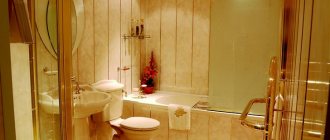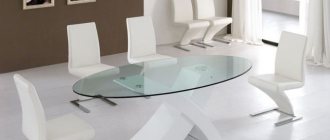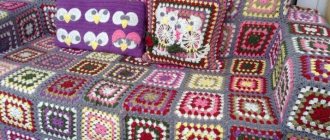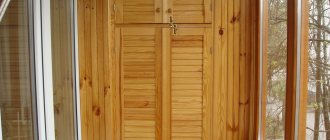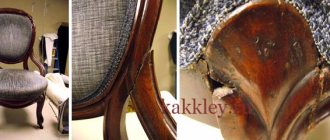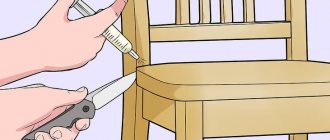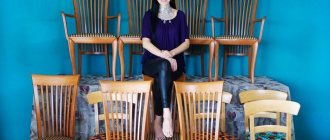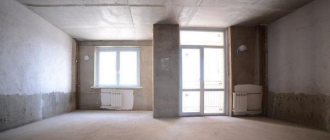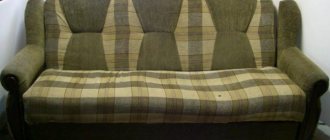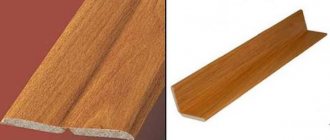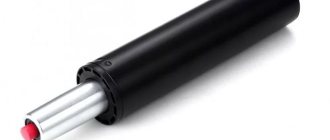The puttying process is not so difficult to master, but in order to learn how to feel how the mixture is laid on the surface, you need to devote more than one hour to this process, constantly practicing. Regular work will allow you to develop the correct movements with your hands and increase the speed of work, but there is one point that beginners will not be able to grasp so quickly. We are talking about puttying internal and external corners. The reason for the difficulty of mastering is that there are always a limited number of these corners on objects, especially external ones. In today's article we will look in detail at how to plaster and putty walls, install beacons, spread putty and, of course, how to level the corners of walls with putty, and we will do all this taking into account how to make the task of removing the corners as easy as possible.
Learning to work with plaster
The main nuances of puttying corner joints
During repairs, there is a need to putty the internal and external corners of the walls. It is important to choose the right mixture, taking into account the type of surface and room.
The putty is sold ready-made and dry. In the first case, labor costs are less, but the costs are more expensive. Nuances of puttying:
- An ideally even angle can be achieved only by grinding the surface, but not by puttying.
- It is necessary to control the size of the putty fraction - the larger it is, the thicker the layer.
- Initially, measure the depth of the drop. If it is less than 1 mm, use a finishing solution.
- Perforated corners are required for external corners; they are not needed for internal corners.
- To determine the vertical skew in the corner, install a ruler along the laser line of the level.
- After the putty has dried on the internal corner joints, they need to be adjusted with a sanding float.
Tip
It is not recommended to align corners if significant distortions are detected. The material consumption will increase, but will not give a noticeable result. Here it is better to use a gypsum mixture.
When is it necessary to putty the corners of the walls?
Page navigation
It is necessary that the corners are even and strong so that they do not crack or crumble when the building shrinks. Leveling them with putty increases the adhesion of the wall to paint or wallpaper. Also, when planning the subsequent wallpapering of walls with thin wallpaper, you need to make everything as even as possible, otherwise all defects and flaws will be clearly visible.
What compositions should I use?
They can be puttied with universal compounds. If the unevenness is significant, then it is better to choose a starting mixture, which is then covered with a finishing layer. For rooms with high humidity and facade work, polymer and cement compositions are suitable, for internal dry walls - gypsum. A deep penetration primer will also be required.
Tools:
- container for mixing the solution;
- construction mixer;
- medium painting spatula (up to 10–15 cm);
- wide metal spatula (up to 45 cm);
- metal grinder;
- corner spatula;
- reinforcing mesh (serpyanka);
- laser level;
- angular sanding float;
- sandpaper P100–200.
Attention
To reinforce the joints of plasterboard sheets, 60 mm serpyanka is used. It is fixed with mounting adhesive, which is embedded in the gypsum board seams, having previously opened them.
How to carry out the procedure correctly?
Puttying them is relatively easy. Pre-marking is carried out, distortions are identified, then the mixture is prepared. After applying the solution, the corners are rubbed with a sanding float.
Preparing to start puttying
If there are protruding corners on the surface, they must be cleaned off with a utility knife or a hammer and chisel. The mixture is kneaded according to the instructions until the lumps and paste-like consistency are eliminated.
You can check the right angle between the walls with a laser level, a construction pencil and a ruler:
- select the vertical plane construction mode at the level;
- move the device as close to the wall as possible, fix the beam parallel;
- starting from the top edge of the corner, apply a ruler in increments of 5–7 cm;
- the laser mark on the ruler will indicate the distance from the wall to the tool;
- After each step, make marks on the base, indicating the depth of the drop.
At this stage, it will become clear what maximum depth of drop you need to work with.
- If the distortion is more than 5 mm, then leveling with plaster along the beacons is required.
- If more than 1 mm, but less than 5 mm, then you first need to apply a layer of starting solution.
- Otherwise, you can use finishing or universal.
It is necessary to pour the mixture into water, and not vice versa. If the plaster contains a large filler, then keep the mixer at low speed or mix by hand. Let the mixture sit for 3-5 minutes, stir again. After this it is ready for use.
Applying the mixture
It is almost impossible to create a perfect corner joint right away. Therefore, at the first stage, it is important to distribute the solution evenly, and remove small flaws during grouting. The mixture must be applied with a wide metal spatula. How to apply it:
- use a paint spatula to transfer the mixture to the edge of the main working tool;
- Apply the spatula with the mortar to the wall from the inside with a gentle slope;
- press lightly, sharply move the tool along the wall towards you;
- randomly fill with putty, making sure that the composition fills the cracks;
- a similar procedure must be performed on the other wall from the same corner;
- to squeeze out the putty, apply the spatula almost parallel to the surface;
- after application, immediately cut off the composition, placing the tool almost perpendicularly;
- after processing, drown the sickle in the composition so that the solution is squeezed out through the mesh;
- cover the reinforcing mesh with a layer of finishing mortar until the pattern is hidden.
An alternative is to use an angle spatula. The tool is applied to the wall, but not parallel, but almost perpendicular. The point should touch the corner line from the inside and insert the putty there. There will be almost no composition left on the walls. Therefore, another layer is applied under the serpyanka, but with strict fixation of the instrument.
Advice
When removing, perforated corners are not used. The procedure is carried out manually and involves preparation for grouting or final leveling.
Alignment
The corner under the baseboard does not need to be carefully aligned. To do this, it is better to use acrylic-based putty. It is enough to lay a layer of no more than 1 mm and level it. The spatula is installed with a slight inclination, then the composition is leveled with vertical movements of the tool, moving from the inner corner joint. Along the upper perimeter, the putty is squeezed out with a metal trowel and goes to the corner.
Straight corners without a plinth are formed using sickle tape or tape with metal threads, by analogy with removing internal ones. Serpyanka, unlike adhesive tape, can lag behind, but does not deform under the putty layer. Therefore, it is necessary to apply at least 2 overlapping layers here. Metallized tape also resists cracking.
Grouting the surface
When they form, the coating forms the sky
A larger rounding that can be sharpened by grinding. For this, special corner graters (for internal ones) or regular ones (for external ones) are used.
Technology:
- install a P100 or P150 attachment on the tool so that its edge protrudes 15–20 mm beyond the grater;
- It is faster to work with an angled float - it is applied to the surface, then rubbed at 900;
- You can also sharpen it with a regular grater by sanding the walls first on one side, then on the other;
- make energetic and fast movements, but do not jerk the instrument if you feel resistance;
- the latter is possible if roughness has formed on the surface - they need to be cut off with a knife or spatula;
- You can sand up to 30–40% of the coating; after finishing work, the surface can be dusted with a dry brush or rag;
- the outer corners are sharpened in the same way.
Important
Do not use a damp cloth to remove dust from the surface, or a household vacuum cleaner. After sanding, it is necessary to apply 1-2 layers of penetrating primer. After 3–4 hours the surface is ready for decorative finishing.
Briefly about the main thing
Puttying of corners is carried out for the purpose of final leveling after preliminary preparation using a plaster solution (if necessary).
To reinforce (strengthen) the turn, corner-forming guides made of metal or plastic, paper tapes and metallized analogues, a construction bandage or a serpyanka-type mesh are used.
To work with tools, spatulas, corner-forming trowels are used, as a rule, and in the case of external corners, temporary guidelines may be needed (wooden beams, plasterboard profiles).
Before each stage of installation work, the work site must be treated with one or another primer.
The preparatory stage includes repairing cracks, unfinished seams between sheet materials, degreasing, removing fungal and corrosive formations with subsequent impregnation with protective compounds, dismantling loose and peeling areas, old decorative finishes, and finishing priming.
Ratings 0
Possible errors in operation
Some mistakes when working with putty can shorten the service life of the coating:
- Don't neglect preliminary markings. The optimal method for removing corners (plaster or putty) will depend on the depth of the difference. This factor also affects the type of composition (universal, finishing, starting).
- Cover the layer of starting putty with the finish. Starting compositions are distinguished by a large fraction, which allows them to be applied in a thick layer. They are difficult to grind and do not form a smooth surface.
- Do not neglect reinforcing materials. Some building bases can shrink, which leads to cracking of the putty and chipping. Serpyanka and metallized tape help prevent cracks; it is better to choose non-shrinking compositions.
- Do not try to manually fill joints and cracks in corners. Follow the technology for laying the putty, squeezing the composition with mechanical force onto the spatula. The solution will lie evenly and cover defects.
- Do not putty the corner joints of drywall without first jointing it. The structure must be disassembled and the seams cleaned. They are filled with adhesive and then stitched together. First, the serpyanka is attached, then puttying is done.
Advice
Lay the mesh as carefully as possible, trying to give it a rectangular shape. Maintain the same temperature in the room so that the putty does not flow or shrink.
Materials for making profiles
Depending on the material that became the basis, devices for designing joints can be as follows:
- Galvanized steel. They are made of galvanized steel, which is practically not subject to rust, since it has a layer of zinc coating on top. But with prolonged use in rooms with high humidity, even such products can become rusty, resulting in unsightly red spots on the finish.
- Aluminum. They are considered lightweight, wear-resistant, and are not afraid of corrosion, but they are more expensive than galvanized ones. They do not tolerate the presence of copper in close proximity.
- Plastic. Most often, such products are made from PVC (polyvinyl chloride). They are very cheap, but have many advantages over their “brothers”. Plastic profiles are chemically inert, do not rot or rust, and do not deteriorate from water. They are produced in a wide range, have various shapes, sizes, widths, and can be equipped with a painting mesh or an adhesive layer under a removable film. Corners that are too thin can bend and become deformed, so it is better to immediately choose high-quality products.
Expert advice
Use the following expert tips to make your job easier:
- take measures to protect mucous membranes and skin, work in a respirator, safety glasses, rubber gloves;
- follow the coating thickness specified in the instructions on the packaging (within 1–2 mm for different compositions);
- apply several layers of mortar if required, but the total thickness of the coating should not exceed 10 mm;
- if the putty is applied on top of the plaster, then sanding in case of significant differences is better done before starting puttying;
- the depth of the distortion allows you to more accurately calculate the material consumption and determine the optimal coating thickness;
- It is better to plaster uneven walls first and only then putty;
- when puttingtying drywall, do not use a universal self-adhesive mesh, giving preference to profile materials;
- before puttying, check the end between the wall and the ceiling for protrusions, remove them with a plane or knife;
- To level the outside, you can use the construction rule, leveling the mortar along the wall.
You can form right internal angles yourself, without the help of craftsmen or special tools. Set the depth of the distortion - the type of putty used, the thickness of the coating, as well as the material consumption will depend on this. It is optimal to lay the solution in 2-3 layers to completely cover the serpyanka and level the corners. During final sanding, it is especially important to consider eye and respiratory protection.
Purpose of paint corners for putty
Before applying the finishing coat, perforated aluminum profiles are attached to the corner. They not only help align joints, but also provide surface protection. The length of the metal elements can vary from 2.5 to 3 m, the edges are trimmed to obtain the desired size. After this, the painting corners are attached to the walls (perforations are created for better fixation).
For the manufacture of corner profiles, various materials are used: metal and polymer. The metal group includes perforated products made of steel and aluminum. To protect the product from corrosion, the steel is coated with zinc. The thickness of the strips of metal profiles does not exceed 0.4 mm, they are easy to install, but are only suitable for straight joints (it is impossible to assemble an arch and other shapes using such elements).
Due to their natural plasticity, polymer corners can be used not only for straight but also for rounded joints. In addition, the products are resistant to moisture and are cheaper than other analogues.
Main advantages of the elements:
- high-quality fixation;
- can be used both indoors and outdoors;
- corrosion resistance;
- easy installation;
- light weight;
- durability and safety.
